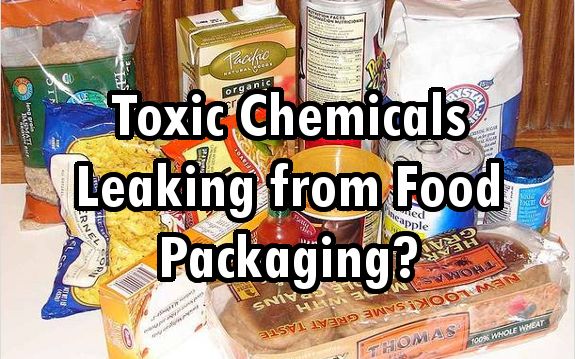12 Ways to Avoid Toxins in the Kitchen

- Avoid plastic whenever possible when it comes to food and beverage. Hard plastics can contain BPA, which is a developmental, neural, and reproductive toxin. Scientists have linked very low doses of BPA exposure to cancers, impaired immune function, early onset of puberty, obesity, diabetes and hyperactivity[1]. It can be transferred from plastic into food and drink. A recent study, found that even BPA-free plastics contain synthetic chemicals which can migrate into food[2].
- If you must use plastic in the kitchen:
- Choose BPA-Free, PVC-free plastic #2, #4, #5 (see plastics guide)
- Do not heat in the microwave (“microwave-safe” only means that the plastic won’t actually melt – the extreme heat of the oven will increase transference of chemicals).
- Do not store fatty, greasy or acidic foods in plastic.
- Do not use scratched, badly worn or cloudy plastics for your food and beverages.
- Hand-wash plastics to avoid wear and tear.
- Avoid hard plastic melamine dishes. They are made by combining the chemical melamine with formaldehyde (which is considered a known human carcinogen[3]) Studies have shown that formaldehyde can leach from dishware into food. [4]
- When it comes to food storage, safer materials include: glass, 304 grade stainless steel, food-grade silicone – all of which do not leach chemicals into your food.
- When it comes to dishware, glass is a great choice, followed by ceramic dishware with lead-free glaze. If you are concerned about breakage – food grade silicone (Kinderville brand), high quality 304-grade stainless steel and bamboo or wood containing food-safe finishes are all safe options.
- Avoid Teflon and any other chemical non-stick coatings. Teflon is a coating manufactured using perfluorooctanoic acid (PFOA), which is considered “a likely human carcinogen.” When heated, cookware coated with Teflon and other synthetic non-stick surfaces emits fumes that can kill birds[5] and potentially sicken people. Over heating of non-stick pans and any scratching or chipping of the materials can cause these chemicals to be released.
- Use caution with aluminum cookware. Aluminum is a soft, highly reactive metal and can migrate in measurable amounts into food when used for cooking. Aluminum has been linked to brain disorders as well as behavioral abnormalities and is considered a toxic substance by the Agency for Toxic Substances & Disease Registry.[6] Many companies are switching from aluminum to Anodized aluminum. In this treatment the aluminum is dipped into a chemical bath to create a more durable layer, so that the aluminum can’t as easily leach into food. However, the anodization can break down over time – so still not the safest choice for cookware.
- Avoid plastic utensils and accessories when cooking as these can melt or flake with extreme heat or wear down over time potentially causing chemicals to migrate into food. Instead choose stable materials such as: wood, bamboo, silicone or stainless steel.
- The safest materials for cookware and bakeware include: glass, high quality 304 grade stainless steel, cast iron and Xtrema ceramic cookware.
- When using stainless steel cookware, know that deeply scratched and pitted pans can cause metals (nickel and chromium) to migrate into food in trace amounts. These are not toxic elements, so there is not really cause for concern unless you have a specific allergy or sensitivity. But to play it safe, avoid frequent use of abrasive materials with stainless steel cookware.
- Use non-toxic cleaning products – avoid bleach, ammonia and synthetic fragrances and dyes.
- Filter tap water for drinking and cooking. Find a high-quality filter than can remove heavy metals, chlorine, VOC’s and other contaminants.
*Lastly, buy products from reputable manufacturers or individuals who can answer your questions.
This article originally appeared at: http://mightynest.com/learn/getting-started/healthy-living-guides/12-ways-to-avoid-toxins-in-the-kitchen.
How do YOU avoid toxins in the Kitchen? What are your favorite products, cleaners?




